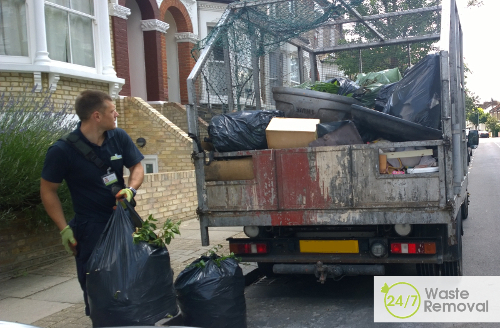For most of mankind’s history rubbish disposal was not a major problem. The amount generated had little impact simply because there wasn’t that many of us. Natural resources were consumed resulting in mostly ash and human waste. At those levels these by-products were quickly and safely degraded back into the ecosystem. Man-made items such as tools were highly prized and handed down to successive generations. The making of stone, wood and even early metal tools had little environmental impact.
How It Started?
 With the age of industrialisation came urbanisation, and as a result large populations quickly arose. Cities soon became very crowded and the accumulation of waste grew. With no waste disposal rules in place the streets became choked with refuse. The idea of a municipal authority with powers to remove rubbish was talked of in the mid-18th century by Corbyn Morris a customs official at the time. He believed the health of the population to be of ‘great importance’ and that public management should be undertaken to clean the city of London.
With the age of industrialisation came urbanisation, and as a result large populations quickly arose. Cities soon became very crowded and the accumulation of waste grew. With no waste disposal rules in place the streets became choked with refuse. The idea of a municipal authority with powers to remove rubbish was talked of in the mid-18th century by Corbyn Morris a customs official at the time. He believed the health of the population to be of ‘great importance’ and that public management should be undertaken to clean the city of London.
Unfortunately it wasn’t until a century later before legislation was introduced. With cholera on the increase causing large scale mortality, a public health debate ensued. In 1842 renowned social reformer Edwin Chadwick penned a report ‘The Sanitary Condition of the Labouring Population’ he put forward a persuasive argument for the need for proper removal and management facilities of refuse. Stating that the health and well-being of the population was at stake. This report played an important role in securing the first law on waste collection.
The 1846 the Nuisance Removal and Disease Prevention Act started the ball rolling for the ever evolving regulation of waste management. With this bin men were born. The first city wide authority in charge of them was the Metropolitan Board of Works. With the introduction of the Public Health Act 1875 every household had to deposit their weekly rubbish in a ‘movable receptacle’ for disposal, and so the dust-bin came about.
Horse drawn open backed carts were the first collection vehicles used. Followed by steam driven trucks at the close of the 19th century. These vehicles soon developed with screw systems and finally the hydraulic ram. Hydraulic rams have been used ever since having been refined over the years.
Waste Management Nowadays
 With so much refuse now being produced incinerators were designed as a method of disposal. The city of Nottingham saw the first one built quickly followed by others. These primitive plants were however extremely unpopular as they produced a lot of airborne ash.
With so much refuse now being produced incinerators were designed as a method of disposal. The city of Nottingham saw the first one built quickly followed by others. These primitive plants were however extremely unpopular as they produced a lot of airborne ash.
Landfill soon became the preferred method of waste management. Basically burying the rubbish in a big hole, this method is still used in most countries. Using old unused quarries or open cast mining sites landfill was seen as a relatively cheap solution. Badly designed and maintained landfill can have some problems. Rats, mice and seagulls all love landfill sites, windblown litter and liquid toxins draining into the surrounding land are just some. Modern sites are lined to prevent leakage, the garbage is compacted and covered at each delivery helping to deter vermin.
As environmental issues become ever more urgent such as pollution and the unsustainable consumption of natural resources, waste disposal methods have had to advance with more emphasis on reclaiming usable materials from rubbish. Turning what is left into energy using several different technologies. The goal these days is to have as little as possible wasted.
Tags: waste management
